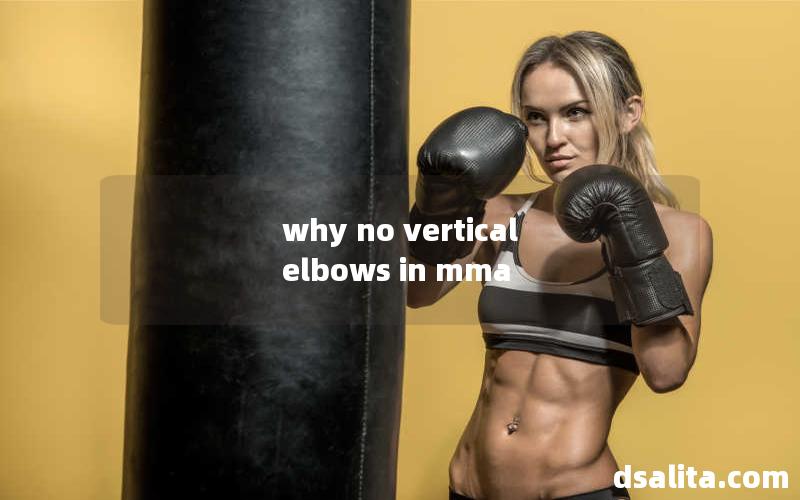Mixed Martial Arts (MMA) is a combat sport that allows a wide range of techniques and strikes. However, one notable technique that is not allowed in MMA is the vertical elbow strike. This article aims to explore the reasons behind the prohibition of vertical elbows in MMA from various perspectives.
1. Safety Concerns
One of the primary reasons for banning vertical elbows in MMA is the safety of the fighters. Vertical elbows involve striking with the pointy part of the elbow, which can cause severe cuts and lacerations on the opponent’s face. These cuts can lead to excessive bleeding and potential permanent scarring. By prohibiting vertical elbows, MMA organizations aim to minimize the risk of severe injuries.
Furthermore, vertical elbows have a higher chance of causing concussions compared to other strikes. The force generated by a well-executed vertical elbow can result in a direct impact on the opponent’s head, increasing the risk of traumatic brain injuries. Banning vertical elbows helps protect the fighters from such potentially life-altering injuries.
2. Legal Considerations
Another reason for the absence of vertical elbows in MMA is the legal implications associated with the technique. Vertical elbows are often seen as a highly aggressive and dangerous strike. Allowing such strikes could potentially lead to legal issues for MMA organizations, as they would be held responsible for any severe injuries caused by these strikes.
By prohibiting vertical elbows, MMA organizations can maintain a level of legality and ensure that the sport is not perceived as excessively violent or dangerous, thus avoiding potential legal complications.
3. Historical Context
The prohibition of vertical elbows in MMA can also be attributed to the historical context of the sport. MMA has evolved from various traditional martial arts, such as Brazilian Jiu-Jitsu, Muay Thai, and wrestling. These martial arts have their own sets of rules and techniques, and vertical elbows are not commonly used in their respective competitions.
As a result, when MMA was established as a sport, it adopted rules and techniques from these traditional martial arts, excluding certain strikes like vertical elbows. This historical context plays a significant role in shaping the rules of MMA and the absence of vertical elbows.
4. Fighter’s Skill Development
The absence of vertical elbows in MMA also affects the way fighters develop their skills and techniques. By not allowing vertical elbows, fighters focus on mastering other strikes such as punches, kicks, and knees. This limitation encourages fighters to become well-rounded in their striking abilities and promotes a more diverse and dynamic fighting style.

Moreover, the exclusion of vertical elbows requires fighters to develop alternative techniques and strategies to overcome their opponents. This limitation adds a layer of complexity to the sport, forcing fighters to think creatively and adapt their game plans accordingly.
5. Spectator Experience
The spectator experience is another aspect to consider when discussing the absence of vertical elbows in MMA. While vertical elbows can be visually impressive, they often result in quick stoppages due to severe cuts. This can be frustrating for spectators who want to witness longer and more action-packed fights.
By prohibiting vertical elbows, MMA organizations aim to provide a more sustained and exciting spectator experience. This allows fights to go on for longer periods, showcasing a wider range of techniques and strategies.
6. Athlete’s Longevity
The longevity and career prospects of MMA athletes are also taken into account when banning vertical elbows. Vertical elbows have a higher likelihood of causing severe injuries that can have long-term consequences for fighters. By eliminating this strike, MMA organizations prioritize the well-being and longevity of their athletes.
By reducing the risk of significant injuries, fighters can have longer and more prosperous careers in the sport, benefiting both the athletes and the organizations.
Conclusion
The absence of vertical elbows in MMA can be attributed to various reasons, including safety concerns, legal considerations, historical context, fighter’s skill development, spectator experience, and athlete’s longevity. These factors collectively shape the rules and regulations of MMA, ensuring the sport remains competitive, entertaining, and safe for all participants.

 Dsalita Boxing
Dsalita Boxing






